Disability tech goes mainstream
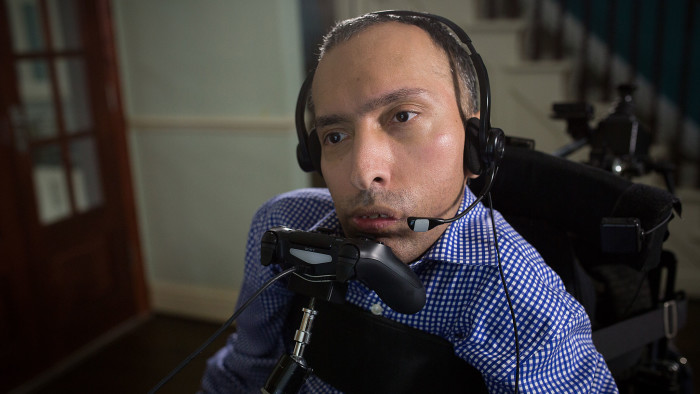
Simply sign up to the Retail & Consumer industry myFT Digest -- delivered directly to your inbox.
Buried in the settings of an iPhone are a range of functions that go unnoticed by many users. These powerful features are designed for partially sighted people but are of value to a much wider group.
The “accessibility” controls — and their equivalents on other smartphones — include making characters bold, inverting the colours of the text and background, enhancing brightness and zooming on screen to ease readability. They are among a range of “assistive technologies” that are no longer just a costly afterthought but an integral element in the design of products — and one that has a broad impact on how they are used.
“Remember when you had to buy a computer for £500, then pay another £600 for special software?” says Robin Spinks, senior strategy manager at RNIB Solutions, an arm of the UK charity for the blind and partially sighted that advises technology companies, including Microsoft and Apple. “You fundamentally change the economics by building accessibility in.”
Simple functions, such as adding “alternative text” to online images (describing the pictures in words), help partially sighted people. Improved contrast and technologies to scan and summarise important messages in large amounts of text can help many users, for example those with dyspraxia.
Spinks points out that open-source code, which allows free access to the “plumbing” of technology, can help spread innovation. When Nesta, the UK innovation group, organised a competition around inclusive technology to highlight life-changing products, it concluded that “producers fail to treat disabled people like the discerning customers they are”. Nesta stressed that aesthetics was as important as functionality, and design should be inclusive, by involving disabled people in development as well as testing.
It showcased ideas such as free software to help people express themselves, Lego-like walking aids that could be adapted and one-finger package-openers for people with limited co-ordination skills.
Google has its own Impact Challenge around disability, and the RNIB is organising a conference next month with the International Association of Accessibility Professionals called TechShare Pro, which will focus on issues of access.
Some companies have been spurred into action by the threat of litigation, notably in the US, where Target, the retailer, was successfully sued in the last decade under anti-discrimination and disability legislation. The company’s website required the use of a mouse, and had poor signposting that made navigation and purchases difficult for blind users.
Aside from the moral case, there is a strong economic incentive: an estimated 285m people in the world are partially sighted, among the 1bn who have some form of disability. As people live longer, often with conditions that reduce their ability to use their hands or to co-ordinate, the market will grow sharply. “Accessibility makes good business sense,” says Spinks.
Specialist services such as eye-movement detectors that operate keyboards for those with motor neurone disease have proved revolutionary and empowering, and are being explored for wider audiences.
Services originally designed for people with disabilities can go mainstream with striking effect. The Ceefax teletext service, for example, was developed in the 1970s for people with hearing difficulties who wanted subtitles to watch television. For three decades, the service and competitors became widely adopted by a far wider group of able-bodied viewers.
Text-to-voice services also helped and were developed with those who are partially sighted in mind, but now have far broader applications, just as voice recognition technology does when it is integrated into software such as Apple’s Siri and Amazon’s Alexa, and for driverless cars.
It is hard to anticipate all future applications that any form of technology might fulfil, but working with disability groups to make sure technology is not discriminatory can be a useful starting point. For Spinks and an increasing number of specialists and designers, it makes moral and business sense alike.
SpecialEffect
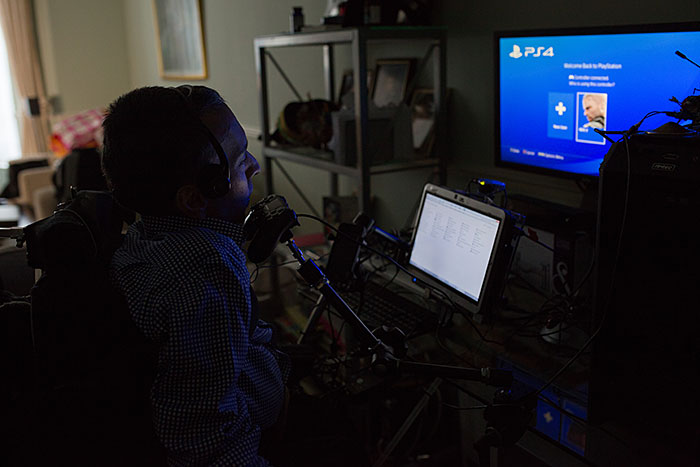
When Ajay Yadav was 16, his spinal muscular atrophy had progressed to the stage where he lost the use of his hands, writes Maija Palmer. Among other drawbacks, it meant he could no longer play the video games he loved. With a chin and voice-controlled computer and wheelchair, Yadav was able to finish his studies and take on a full-time role as an IT manager.
Gaming, however, eluded him, until he came across SpecialEffect, a UK-based charity that modifies games controllers so that disabled people can use them.
“We tried different switches, different games and managed to find a solution that worked for me,” says Yadav. He now plays sports games and first-person shooter games with a modified controller operated by a combination of his lip, voice controls and a button that responds to tiny movements of his right hand. “I was like a kid in a candy shop. It had been 25 years since I had played anything, I got very excited,” he says.
SpecialEffect was founded 10 years ago by Mick Donegan, a special needs teacher who had been involved with setting up computer equipment for disabled children so that they could study. He realised, however, that they often had no way to play or relax after school and at weekends.
“I realised how difficult it was for children with severe physical disabilities to be able to play independently. It is something that is so important for their psychological development, physical development, motivation and a way to make friends,” says Donegan. Video games were a way of allowing them to do that.
SpecialEffect helps adults, too. The work is painstaking, as a team of occupational therapists and technologists tailor set-ups to individuals’ needs. Assistive technologies can be anything from voice controls to eye gaze trackers, or simply changing the springs inside a games controller to make a joystick easier to move.
“It is very customised. There aren’t many people who use the same control method with the same game,” says Donegan.
At the same time, SpecialEffect is raising awareness among games companies about how they might make their games more accessible for disabled gamers. Sometimes, Donegan says, it requires no more than changing a few lines of code. SpecialEffect is also developing its own code — for example, to help disabled gamers play Minecraft, the popular building and survival game — and will make this open source and available to anyone.
Too Wheels
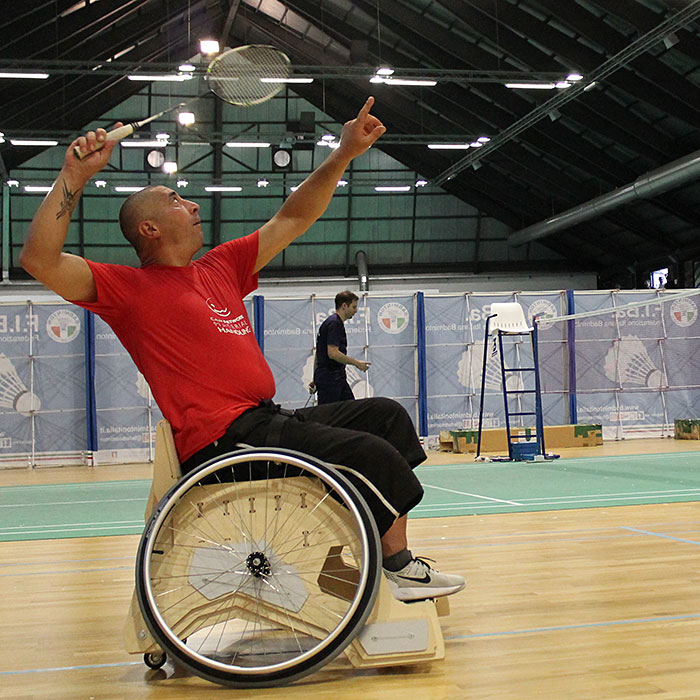
Industrial designer Fabrizio Alessio, has combined traditional craft practices and digital technology to produce instructions for an affordable do-it-yourself wheelchair, writes Sarah Murray.
He knew that traditional sports wheelchairs could be expensive and not always suited to users’ needs. “I have a lot of experience working as a volunteer with people with disability,” he says. “So I know the problems of using wheelchairs for disabled people and their family and carers.”
He started looking at the ergonomics and functions of the wheelchair for a masters degree project at the Polytechnic University of Turin. Alessio worked at FabLab Torino, a centre where designers and engineers can experiment with new technologies such as 3D printing. Athletes and biomedical experts provided additional input and sports teams tested the chair.
The chair itself can be made with low-tech materials such as plywood, pipes and bicycle wheels, but digital and online technologies have been an essential part of making the project work. In designing the chair and making the prototype, for example, Alessio used 3D printing as well as traditional welding tools. “It’s a mix of craft and new technologies,” he says.
Alessio made the design open source, so that it can be easily shared. Anyone can download it from the TwoWheels website. “Thanks to the internet, it’s possible to reach people in other parts of the world,” he says.
Moreover, users can tailor the construction to the materials they have at hand locally and to their own body’s dimensions and individual needs. “People can discover how they can customise the wheelchair for their needs and improve it with different materials and technologies,” he says.
While the project has only a small target market, Alessio sees his work as contributing to a broader mission: spreading the idea that the maker movement — a community of independent inventors, designers, programmers and artisans — can help advance global healthcare. “It’s a project on which I’m spending a lot of energy,” he says. “But the satisfaction I receive is incredible.”
Bristol Braille Technology
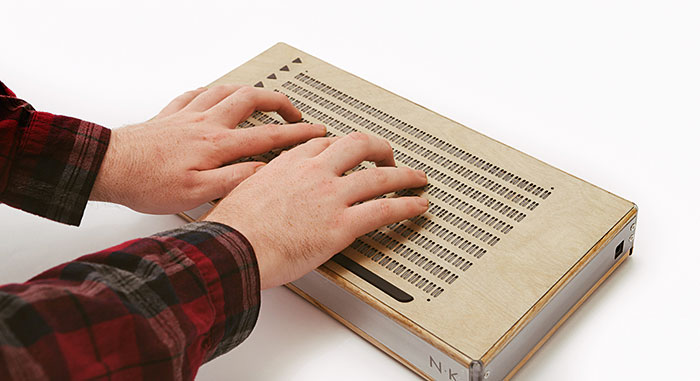
How much shelf space does it take to house JRR Tolkien’s Lord of the Rings trilogy? Several cubic feet if it is a Braille edition, according to social entrepreneur Ed Rogers. That isn’t the only problem. Most digital Braille readers cost thousands of pounds.
Rogers is trying to change this with the help of a blind community group called the Braillists and Bristol Braille Technology (BBT), a company of sighted engineers. They are developing the Canute, a device Rogers describes as “like a Kindle for Braille” that will make Braille literacy “radically more affordable”.
Traditionally produced by embossing paper, Braille is a tactile system of raised dots that enables blind people to read and write. In digital versions, pins are raised and lowered to create the text.
Rogers’ aim is to offer this kind of technology for hundreds, instead of thousands, of pounds by reducing the machine’s number of moving parts and simplifying its software. Moreover, unlike existing digital readers, which display a single line of text with 40 characters, the Canute has a full-page display. Roughly the size of a hardback novel, it will display everything from calendars to maths figures, bar charts and music, and can conduct word searches.
In developing the Canute, the team has an ambitious goal — to make Braille literacy commonplace again. Use of Braille has declined recently, partly because paper-based Braille books are inconvenient and because of the high cost of digital readers. Set up as a non-profit community interest company, Bristol Braille has no plans to make a financial return. It receives loans and funding from organisations such as the Nominet Trust, the public benefit company, and Comic Relief, the television-based fundraiser. “We’d rather get by with more limited resources but know that we’re doing exactly what we want to do,” Rogers says.
Bristol Braille plans to start taking orders early next year, and by using open source software, the Canute can be adapted by other developers to their own needs. “The aim is to make the total price of becoming Braille literate much lower and to put Braille to lots of new uses,” says Rogers.
The Open Voice Factory
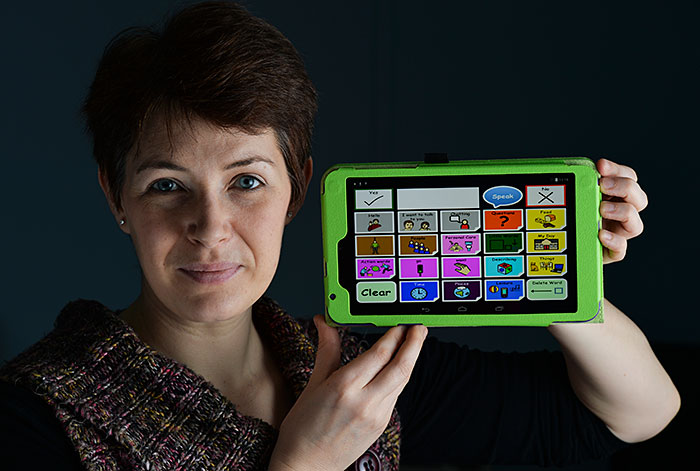
Until he was 18, Joe Reddington’s younger brother Richard, who has severe physical, emotional and cognitive difficulties, communicated using a limited number of signs. Then his family purchased an augmentative and alternative communication (AAC) device, a speech-generating machine.
“It changed his life,” says Reddington, a former computer scientist. “Suddenly he could make 1,000 different utterances and make jokes — it was staggering.”
The technology was expensive, however, and Reddington knew that not every disabled person could access one. “Richard’s device was about £5,000 at the time,” he says. “It was worth every penny, but there are families who are choosing between that and heat and food.”
Reddington’s social enterprise, eQuality Time, is attempting to make this technology more widely available by developing free communication software — The Open Voice Factory — that runs on anything from a tablet or laptop to a mobile phone.
To communicate, users of The Open Voice Factory aid upload a “pageset” — a template of icons that represent words. Users select the word they need and the device speaks it. In AACs, pagesets are designed around categories such as food, hygiene, clothing, people and places. “But those pagesets are intellectual property,” explains Reddington. The first thing he did was release a pageset under a creative commons licence, meaning anyone could use and share it.
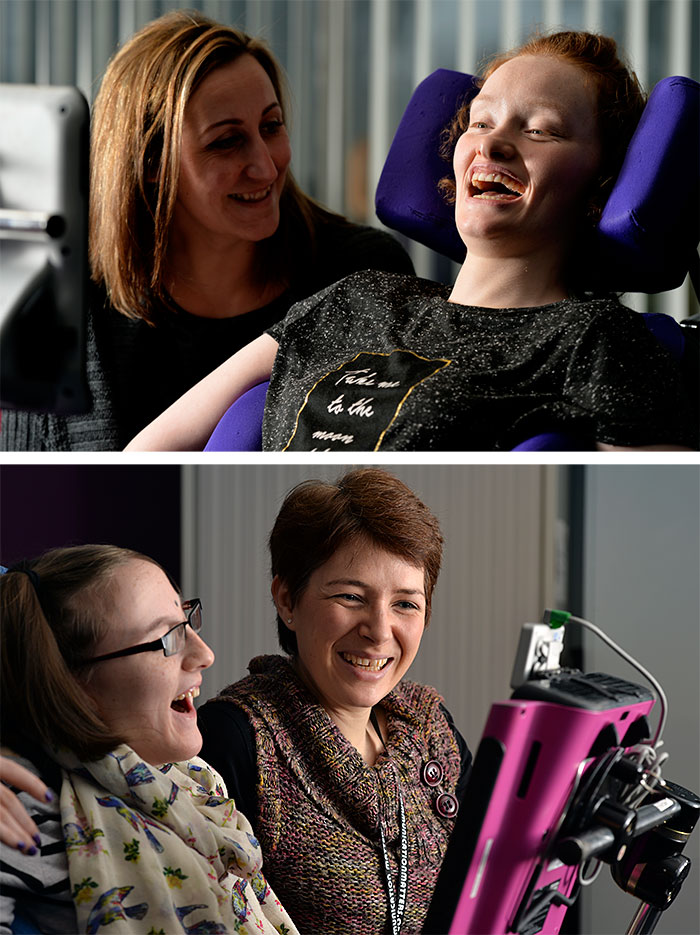
Working with Kate McCallum, a language therapy technician whose brother is also an AAC user, Reddington developed the project using philanthropic funding and a team of volunteers. Donors and volunteers have not been hard to find — the biggest hurdle is bureaucracy. Because the technology is considered a medical device, it requires regulatory approval.
“We’ve been waiting for an FDA [US Food and Drug Administration] response since February 10,” says Reddington. “The medical device laws in the UK and US are necessary, but they do need updating, particularly around open-source projects.”
He hopes this will happen sooner rather than later. “Think of never being able to tell your family you love them or not being able to make the simplest choices about what you want to eat,” he says. Once people can communicate, they can avoid abuse, improve their healthcare by describing their symptoms and gain independence. “That’s life-changing,” Reddington says.
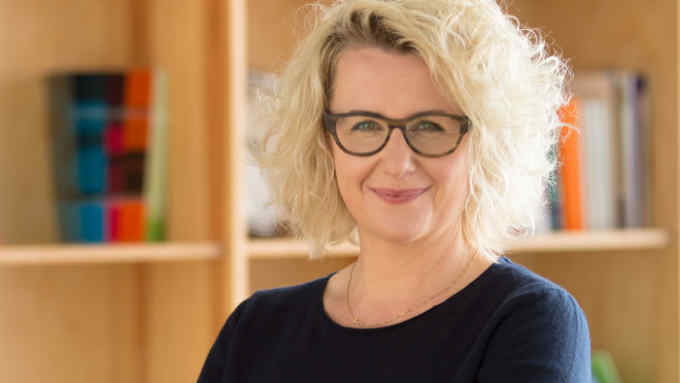
Comments